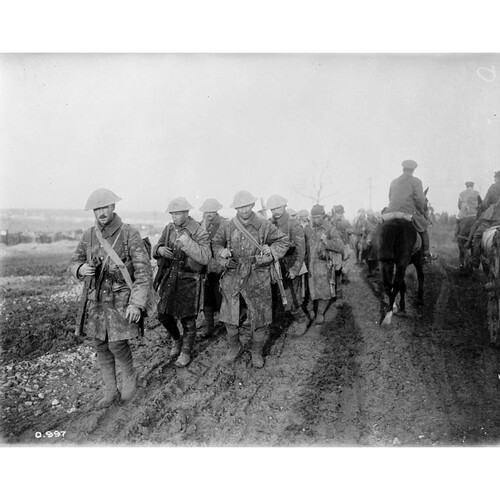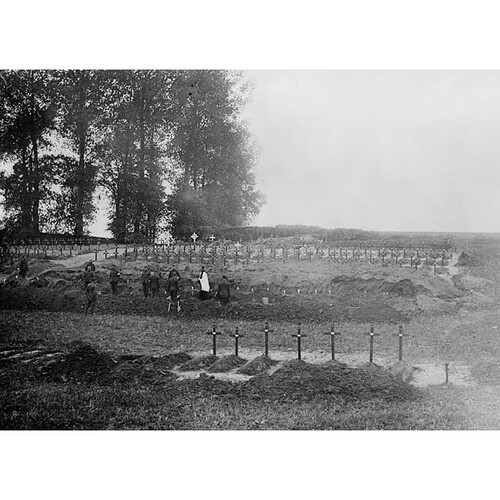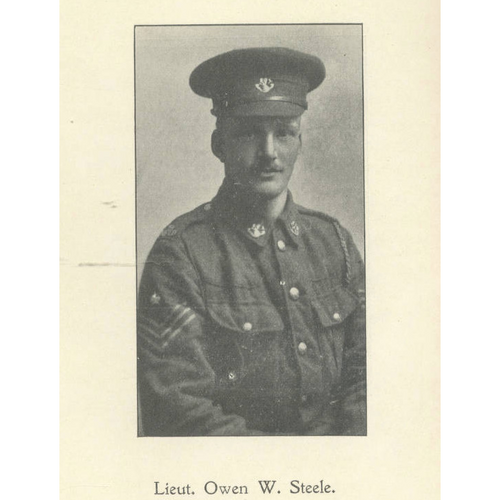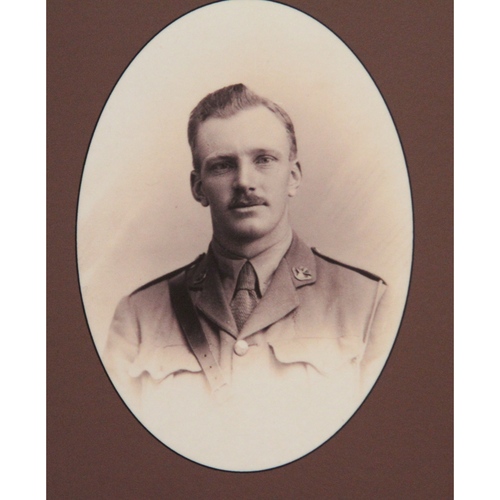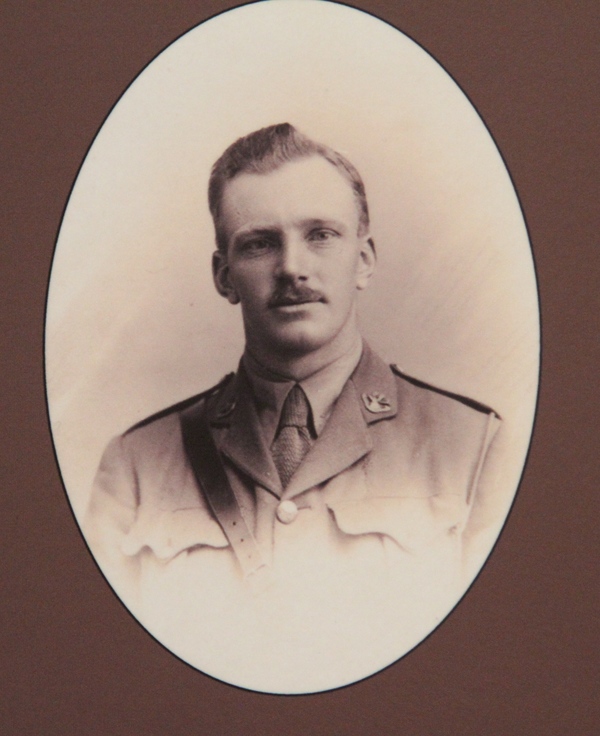
Source: Link
STEELE, OWEN WILLIAM, salesman, soldier, and officer; b. 28 April 1887 in St John’s, eldest of the ten children of Samuel Owen Steele and Sarah Harris; d. unmarried 8 July 1916 near Englebelmer, France.
Owen Steele exemplified the optimistic spirit of Newfoundland’s brief golden age. During the years before World War I, the oldest of Britain’s colonies seemed poised to become a viable small nation, a kind of Iceland within the empire. But no other country in the empire paid a higher price proportionately for its war effort, and no Allied unit suffered more heavily at the battle of the Somme than the Newfoundland Regiment. Moreover, the war caused Newfoundland to incur huge debts which were carried into the Depression and led to the country’s bankruptcy. Thus Steele’s death symbolizes not only the loss of a generation of potential leaders but the end of a national dream. His diaries and letters from the front provide a vivid and poignant record of the spirit and sense of collectivity that were the hallmarks of his remarkable fighting unit.
Steele’s provenance bore witness to Newfoundland’s expanding commerce. His father had emigrated to St John’s in the early 1880s, married the niece of a local hardware merchant, and quickly elevated a segment of that family business into Newfoundland’s largest glass and china emporium. Owen grew up “over the shop,” and after graduating from Bishop Feild College joined the family enterprise. A sojourn in Vancouver spent gaining experience as a salesman with Henry Birks and Sons suggests that he was being groomed for a top position.
In August 1914 Steele was one of the first to enlist in the Newfoundland contingent, nicknamed the Blue Puttees after the colour of their leggings. He quickly proved to be a keen and efficient soldier and was promoted sergeant-major on 6 October. Time and again his observations are imbued with Newfoundland patriotism. “We are all very particular here that we should not be classed as Canadians,” he wrote from Salisbury Plain, England, in December. “We are much prouder of our distinctiveness as Newfoundlanders.” On 23 April 1915 he was commissioned second lieutenant.
The first test under fire for Steele and his regiment came in the autumn when the Newfoundlanders were dispatched to reinforce the battered 29th British Division at the Dardanelles. It was a measure of his nerve and steadiness that in January 1916, when the last troops were evacuated, he was selected to command a section of the rearguard. That spring the 29th Division was sent to France. “No need to bother about us at all, for we shall soon finish off this blooming war,” he wrote home on 26 March, after the Newfoundland Regiment had arrived. Throughout May and June 1916 he reported “working parties day and night” as the Newfoundlanders dug trenches near the hamlet of Beaumont-Hamel (Beaumont). They christened the trench that would be their jumping-off point St John’s Road. On 20 June Steele reported “a strange pensiveness about everything and we are all strangely pensive about ‘The Great Push.’” Ten days later, “It is surprising to see how happy and light-hearted everyone is, and yet this is undoubtedly the last day for many.” He added, “I believe that the climax of our troubles will be reached within the next few days, after which the day of peace will rapidly draw near.”
This was Steele’s last letter. On 1 July 1916, the opening day of the battle of the Somme, 778 members of the Newfoundland Regiment went over the top; 68 answered the roll-call the following morning. Steele was one of a small cadre of officers who had been held back to help rebuild the unit if necessary. But on the 7th he was severely wounded by an enemy shell while acting as billeting officer at the nearby village of Englebelmer. He died the next day.
Owen Steele’s memorial, and that of the other Newfoundlanders who died during the war, is the most eloquent of the many monuments on the former Western Front: the caribou, symbol of a regiment and a people, that overlooks the battlefield of Beaumont-Hamel. Their most eloquent epitaph was written 75 years later by David Macfarlane, three of whose Newfoundland great-uncles died in the war, in his book The Danger Tree. “The century that carried on past the moments of their deaths was not what it might have been. It was largely a makeshift arrangement, cobbled round their constant and disastrous absence.”
Typed excerpts from Owen William Steele’s diaries and letters, 1914–16, are preserved in a leather-bound commemorative album in the archives of the Centre for Newfoundland Studies, Memorial Univ. of Nfld (St John’s), mf-147, one of several copies transcribed and edited by a sister of the subject shortly after World War I and distributed to members of the family. The original papers are no longer extant.
Sandra Gwyn, Tapestry of war: a private view of Canadians in the Great War (Toronto, 1992). David Macfarlane, The Danger Tree: memory, war, and the search for a family’s past (Toronto, 1991). G. W. L. Nicholson, The fighting Newfoundlander: a history of the Royal Newfoundland Regiment (St John’s, [1964]).
Cite This Article
Sandra Gwyn, “STEELE, OWEN WILLIAM,” in Dictionary of Canadian Biography, vol. 14, University of Toronto/Université Laval, 2003–, accessed December 29, 2025, https://www.biographi.ca/en/bio/steele_owen_william_14E.html.
The citation above shows the format for footnotes and endnotes according to the Chicago manual of style (16th edition). Information to be used in other citation formats:
| Permalink: | https://www.biographi.ca/en/bio/steele_owen_william_14E.html |
| Author of Article: | Sandra Gwyn |
| Title of Article: | STEELE, OWEN WILLIAM |
| Publication Name: | Dictionary of Canadian Biography, vol. 14 |
| Publisher: | University of Toronto/Université Laval |
| Year of publication: | 1998 |
| Year of revision: | 1998 |
| Access Date: | December 29, 2025 |


